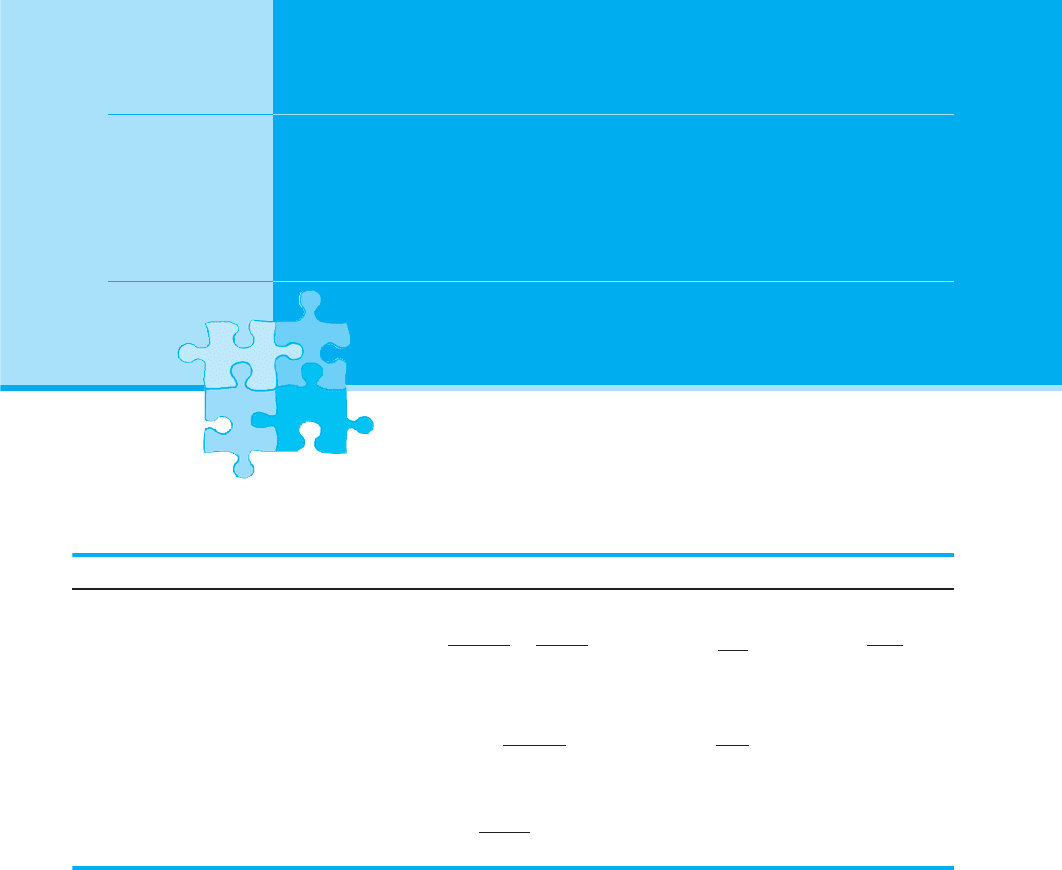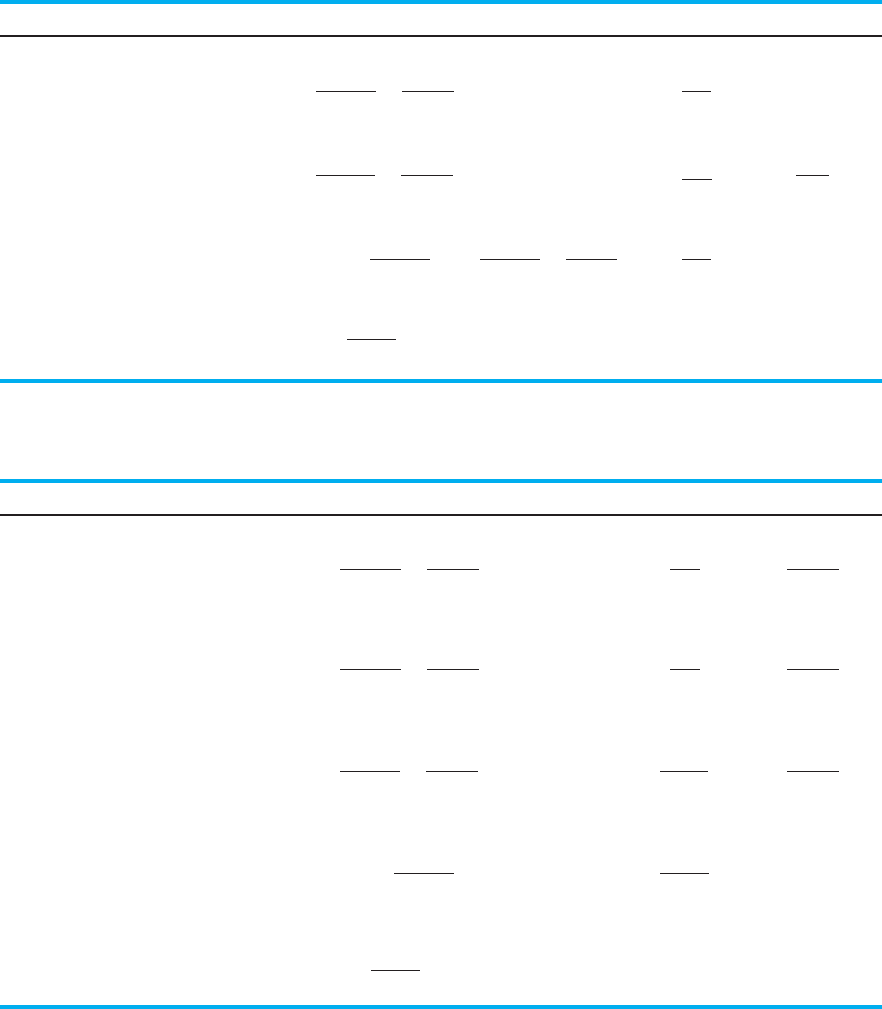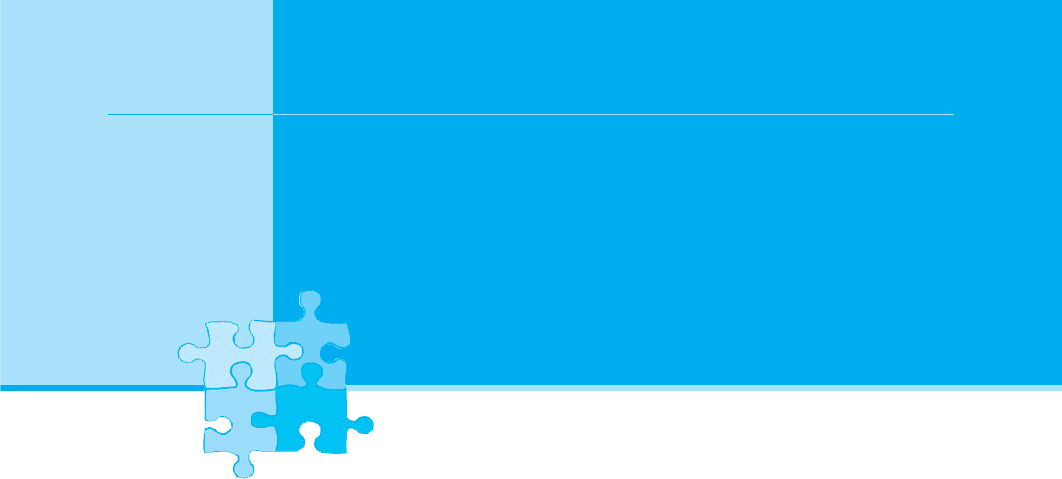Jackson S.L. Research Methods and Statistics: A Critical Thinking Approach
Подождите немного. Документ загружается.


392
■ ■
APPENDIX A
10017_15_appendixA.indd 392 2/1/08 1:39:11 PM
Text not available due to copyright restrictions

Statistical Tables
■ ■
393
10017_15_appendixA.indd 393 2/1/08 1:39:11 PM
Text not available due to copyright restrictions

394
■ ■
APPENDIX A
10017_15_appendixA.indd 394 2/1/08 1:39:12 PM
Text not available due to copyright restrictions

Statistical Tables
■ ■
395
10017_15_appendixA.indd 395 2/1/08 1:39:12 PM
Text not available due to copyright restrictions

396
■ ■
APPENDIX A
10017_15_appendixA.indd 396 2/1/08 1:39:12 PM
Text not available due to copyright restrictions

Statistical Tables
■ ■
397
10017_15_appendixA.indd 397 2/1/08 1:39:13 PM
Text not available due to copyright restrictions

398
ALTERNATIVE TABLE 10.5 ANOVA Summary Table Using Computational Formulas
SOURCE df SS MS F
Between groups k – 1
X
g
n
g
X
N
∑
∑
−
∑
(
)
⎡
⎣
⎢
⎢
⎢
⎤
⎦
⎥
⎥
⎥
(
)
2
2
SS
b
df
b
MS
b
MS
w
Within groups N – k
X
g
X
g
n
g
2
2
∑
−
∑
∑
(
)
⎡
⎣
⎢
⎢
⎢
⎤
⎦
⎥
⎥
⎥
SS
w
df
w
Total N – 1
X
X
N
2
2
−
∑
∑
(
)
Computational Formulas
for ANOVAs
APPENDIX
B
10017_16_appendixB.indd 398 2/1/08 1:40:06 PM

Computational Formulas for ANOVAs
■ ■
399
ALTERNATIVE TABLE 11.8 Two-Way Randomized ANOVA Summary Table Using Computational Formulas
SOURCE df SS MS F
Factor A A – 1
XX
N
A
A
n
∑
∑
−
∑
(
)
⎡
⎣
⎢
⎢
⎢
⎤
⎦
⎥
⎥
⎥
(
)
22
SS
df
A
A
MS
MS
A
Error
Factor B B – 1
X
n
X
N
B
B
∑
∑
−
∑
(
)
⎡
⎣
⎢
⎢
⎢
⎤
⎦
⎥
⎥
⎥
(
)
22
SS
df
B
B
MS
MS
B
Error
A × B( A – 1)( B – 1)
X
n
X
N
SS SS
C
C
A B
∑
∑
−
∑
−−
(
)
⎡
⎣
⎢
⎢
⎢
⎤
⎦
⎥
⎥
⎥
(
)
22
SS
df
AB
AB
×
×
MS
MS
AB
Error
×
Error AB ( n – 1)
X
X
C
C
n
2
2
−
∑
∑ ∑
(
)
⎡
⎣
⎢
⎢
⎢
⎤
⎦
⎥
⎥
⎥
SS
df
Error
Error
T otal N – 1
X
X
N
2
2
−
∑
∑
(
)
ALTERNATIVE TABLE 10.13 Repeated Measures ANOVA Summary Table Using Computational Formulas
SOURCE df SS MS F
Participant n – 1
X
k
X
N
P
∑
∑
−
∑
(
)
⎡
⎣
⎢
⎢
⎢
⎤
⎦
⎥
⎥
⎥
(
)
22
SS
df
P
P
Between k – 1
X
t
n
t
X
N
∑
∑
−
∑
(
)
⎡
⎣
⎢
⎢
⎢
⎤
⎦
⎥
⎥
⎥
(
)
22
SS
b
df
b
MS
b
MS
e
Error (k – 1)(n – 1)
X
X
k
X
t
n
t
X
N
P
2
2
2
2
−
∑
∑∑
−
∑
∑
+
∑
(
)
⎡
⎣
⎢
⎢
⎢
⎤
⎦
⎥
⎥
⎥
(
)
⎡
⎣
⎢
⎢
⎢
⎤
⎦
⎥
⎥
⎥
(
)
SS
e
df
e
Total N – 1
X
X
N
2
2
−
∑
∑
(
)
10017_16_appendixB.indd 399 2/1/08 1:40:08 PM

400
Answers to Odd-Numbered
Chapter Exercises and All
Review Exercises
APPENDIX
C
Chapter 1
1. Answers will vary. Here are some examples.
Superstition and Intuition
Breaking a mirror leads to 7 years of bad luck.
A black cat crossing your path signifies bad luck.
I have a feeling that something bad is going to
happen on my trip next week.
Authority
You read in the newspaper that more Americans
are overweight now than 10 years ago.
You recently saw a TV commercial for a new diet
product that was endorsed by a very slim
soap opera star.
Tenacity
You have heard the SlimFast slogan so many
times that you believe it must be true.
Rationalism
SUVs use more gas and spew more emissions
than many other vehicles. Because emissions
contribute significantly to air pollution,
those who drive SUVs must be less con-
cerned about polluting the environment.
Empiricism
I have observed that using note cards can be an
effective means of studying for an exam.
I have observed that using note cards can be
an ineffective means of studying for an
exam.
Science
Studies have shown that smoking has been
linked to lung disease.
Studies have shown that elaborative rehearsal
leads to better retention than rote
rehearsal.
3. Many scientists view being called a skeptic as
a compliment because it means that they do
not blindly accept findings and information.
Skeptics need data to support an idea, and they
insist on proper testing procedures when the
data are collected. Being a skeptic also means
applying three criteria that help define science:
systematic empiricism, public verification, and
solvable problems.
5. Research methods are equally important to all
areas of psychology because all that we know
about a discipline is gained through research.
For those planning to pursue careers in clinical/
counseling psychology, knowledge of research
methods is important to determine whether
a particular counseling method or drug is an
effective treatment.
7. a. The independent variable is the amount of
caffeine.
b. The dependent variable is the anxiety level.
c. The control group receives no caffeine,
whereas the experimental group receives
caffeine.
d. The independent variable is manipulated.
10017_17_appndixC.indd 400 2/1/08 1:42:27 PM
Answers to Odd-Numbered Chapter Exercises and All Review Exercises
■ ■
401
Answers to Chapter 1
Review Exercises
Fill-in Self-Test Answers
1. intuition
2. tenacity
3. hypothesis
4. skeptic
5. Solvable problems
6. Pseudoscience
7. description, prediction, explanation
8. Applied
9. case study
10. population
11. correlational
12. participant (subject)
13. independent
14. control
Multiple-Choice Self-Test Answers
1. d
2. a
3. b
4. d
5. a
6. c
7. b
8. b
9. c
10. b
11. d
12. d
Chapter 2
1. There is no correct answer to this question. It
requires library work.
3. When participants in a study are classified as
“at risk,” this means that there is the potential
for them to be under some emotional or physi-
cal risk. Participants “at minimal risk” are at no
more risk than would be encountered in daily
life or during the performance of routine physi-
cal or psychological examinations or tests.
5. Researchers must consider how informed con-
sent works with children. It should be obtained
from the legal guardian for all participants
under 18 years of age. However, if the child
is old enough to understand language, the
researcher should also try to inform the child
about the study. The researcher also needs to be
particularly sensitive to whether or not the child
feels comfortable exercising the rights provided
through the informed consent.
Answers to Chapter 2
Review Exercises
Fill-in Self-Test Answers
1. PsycLIT; PsycINFO
2. Social Science Citation Index (SSCI)
3. informed consent
4. deception
5. institutional review board (IRB)
Multiple-Choice Self-Test Answers
1. c
2. a
3. a
4. c
Chapter 3
1. Alternative c is an operational definition of
depression.
3. c. .83. Although this is not the strongest cor-
relation coefficient, it is the strongest positive
correlation. It therefore is the best measure of
reliability.
5. If the observers disagreed 32 times out of 75,
then they agreed 43 times out of 75. Thus, the
interrater reliability is 43/75 .57. Because the
interrater reliability is moderate, the librarians
should use these data with caution. In other
words, there may be a problem with either the
measuring instrument or the individuals using
the instrument, and therefore the data are not
terribly reliable.
Answers to Chapter 3
Review Exercises
Fill-in Self-Test Answers
1. operational definition
2. Magnitude
3. nominal
4. interval
5. self-report measures
6. Reactivity
10017_17_appndixC.indd 401 2/1/08 1:42:28 PM
